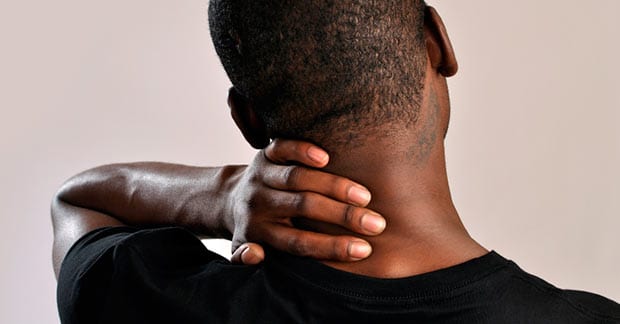This article is part 1 of a 2 part series. For Part 2, click here.
Whiplash is a condition that can occur from MANY causes—in fact, anything that results in a sudden change in the head/neck position. Usually, there is a rapid acceleration that injures the soft tissues around the neck area by stretching them beyond their limits. Hence, the more accurate terms for whiplash are “cervical acceleration-deceleration” (CAD) as it describes the mechanism of the injury and “whiplash associated disorders” (WAD) describing the degree of injury.
Most commonly, when we think about whiplash, we immediately envision a motor vehicle collision (MVC), but prior to the invention of the automobile, the term “railroad spine” was coined to describe injuries to the neck from crashes that occurred between trains. Since then, due to pilots landing planes on aircraft carriers, sports injuries, and the rise of the automobile, this once rare condition has affected MOST of us at some point in time!
Today’s topic will focus on self-care. What can you and I do for ourselves WHEN we suffer a CAD injury? Since there are different levels of injury severity, keep in mind that EACH CASE IS UNIQUE and we will ONLY be discussing general options. So ALWAYS let your symptoms guide you in the process of care—that is, if you feel a sharp, piercing/stabbing, activity or movement stopping type of pain, STOP!!! Don’t further injure your tissues!!! We will discuss a common WAD II injury (soft-tissue injury limiting motion but not injuring nerves) and we’ll look the acute and sub-acute stages of the injury.
Stage 1 – ACUTE: The inflammatory phase (up to 72 hours). ICE is necessary to decrease swelling (inflammation). Limit motion but try NOT to use a collar unless you have no choice as even small movements that avoid the sharp/knife-like pain are better than no movement at all. A collar may be needed when driving (especially if the roads are bumpy)! Anti-inflammatory herbs like ginger, turmeric, boswellia, bioflavonoid, and others reduce inflammation WITHOUT irritating the stomach, liver, kidneys, and will NOT inhibit the chemicals needed for healing (like NSAIDs do!). Chiropractic care SHOULD begin ASAP after an injury. Your doctor may only use gentle manual traction and/or mobilization, also staying within reasonable pain boundaries. It’s been well proven that early movement is best!
Stage 2 – SUB-ACUTE: The repair phase (72 hours to 14 weeks). Ice can continue if it helps control pain. You can also alternate ice and heat at 10/5/10/5/10 minutes, starting and ending with ice (it “pumps” the tissues). Cervical range of motion (ROM) exercises with LIGHT resistance (use 1 or 2 fingers against the head and push in a forward, backward, sideways, and rotating directions first with “isometrics”—not moving the head, and when tolerated, “isotonic”—moving the head against the LIGHT pressure applied in BOTH directions within the range that avoids sharp/knife-like pain. Movement, strength, pain, and coordination are ALL better managed when light resistance + motion is used vs. not moving (isometrics). Self-applied methods of performing “myofascial release” (which we will teach you) include: Self-massage, the use of a tennis ball and/or foam roll, the use of a TheraCane or Intracell (Exercise Stick), and others. During this repair phase, chiropractic adjustments REALLY help!
